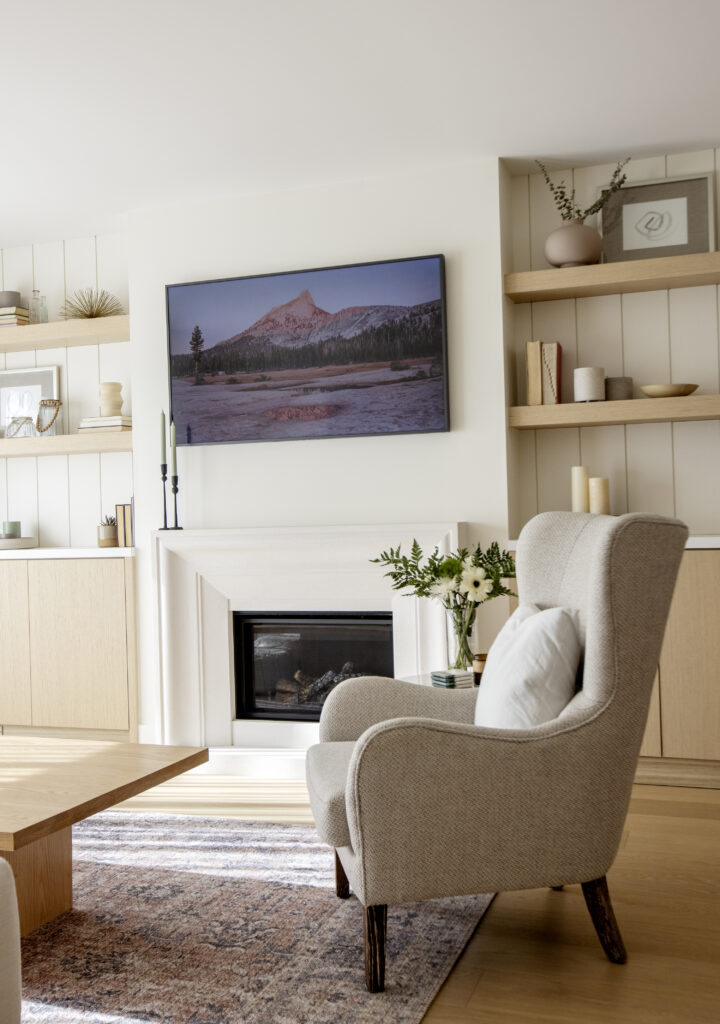Buying a fixer-upper can be an exciting venture, offering the opportunity to transform a dated or neglected property into your dream home. However, it’s crucial to know what to look for to ensure your investment is worthwhile and that the renovation process is as smooth as possible. Here are the key elements to consider when purchasing a fixer-upper home:
1. Structural Integrity
The most critical aspect to assess in a fixer-upper is its structural integrity. Look for signs of foundation issues, such as cracks in the walls, uneven floors, or doors and windows that stick. If you notice any of these issues, it’s essential to have a professional structural engineer evaluate the property. A solid foundation is the cornerstone of any renovation, and addressing structural problems can be costly.
Designer Tip: Bring a trusted contractor or inspector with you to view the property. They can provide insights into potential structural issues and estimated repair costs.

Photography by: Janis Nicolay
2. Roof Condition
The condition of the roof is another vital factor to consider. Look for signs of wear and tear, such as missing shingles, leaks, or sagging areas. A well-maintained roof protects your home from water damage and other elements, so ensure it’s in good shape or budget for necessary repairs or replacement.
Designer Tip: Check the roof’s age and ask the seller for any warranty information or past repair records.

Photography by: Janis Nicolay
3. Plumbing and Electrical Systems
Updating plumbing and electrical systems can be a significant expense in a renovation project. Inspect the home’s plumbing for leaks, water stains, and water pressure issues. Similarly, check the electrical system for outdated wiring, insufficient outlets, and flickering lights. Ensuring these systems are up to code is crucial for safety and functionality.
Designer Tip: Have a licensed plumber and electrician inspect the systems to identify potential problems and provide repair estimates.

Photography by: Janis Nicolay
4. Layout and Floor Plan
Consider the existing layout and floor plan of the home. While cosmetic changes are relatively easy to make, structural changes, such as moving walls or altering the floor plan, can be more complex and expensive. Look for a layout that works for your needs or one that requires minimal changes to achieve your desired flow and functionality.
Designer Tip: Focus on properties with good “bones” that fit your lifestyle. Minor layout changes, like opening up a kitchen to a living area, can have a significant impact without extensive structural work.

Photography by: Janis Nicolay
5. Natural Light and Windows
Natural light can transform a space, making it feel larger and more inviting. Check the home’s windows to ensure they are in good condition and allow ample light into key areas. Replacing windows can be expensive, so it’s beneficial if the existing ones are in decent shape.
Designer Tip: Consider the orientation of the home and the placement of windows. South-facing windows typically receive the most sunlight, enhancing warmth and brightness.

Photography by: Janis Nicolay
6. Potential for Expansion
If you’re planning to expand the home in the future, assess the property’s potential for additions or extensions. Check local zoning laws and regulations to understand any restrictions. A spacious yard or unused attic space can provide opportunities for future expansion, adding value to your investment.
Designer Tip: Consider the long-term potential of the property. Even if you don’t plan to expand immediately, knowing that you have the option can be beneficial.

Photography by: Janis Nicolay
7. Cosmetic Condition
Cosmetic issues, such as outdated fixtures, peeling paint, or worn flooring, are often easier and less expensive to address than structural problems. Look beyond the surface imperfections and envision how you can update the space with new finishes, colors, and materials.
Designer Tip: Focus on properties where you can add value through cosmetic updates rather than those requiring extensive structural work.

Photography by: Janis Nicolay
8. Neighborhood and Location
The location of a fixer-upper is just as important as the property itself. Research the neighborhood to ensure it’s a desirable area with good schools, amenities, and potential for future growth. A great location can significantly enhance the value of your renovated home.
Designer Tip: Visit the neighborhood at different times of the day to get a sense of the community and its atmosphere.

Photography by: Janis Nicolay
9. Budget and Renovation Costs
Finally, it’s crucial to have a clear understanding of your budget and the potential renovation costs. Factor in the purchase price of the home, the cost of repairs and updates, and a contingency fund for unexpected expenses. Be realistic about what you can afford and prioritize projects that will give you the best return on investment.
Designer Tip: Work with a financial advisor or mortgage specialist to understand your financing options and create a detailed renovation budget.
Purchasing a fixer-upper can be a rewarding experience, but it requires careful consideration and planning. By focusing on these key elements, you can make informed decisions and ensure that your investment leads to a beautiful.

Photography by: Janis Nicolay




